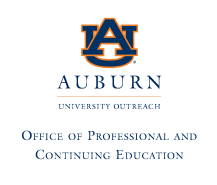
- Description
- Objectives
- Outline
- Materials
- Certification
- System Requirements
- Watch a Demo
Our Ophthalmic Assistant Associate program provides all the practical information you need to complete your day-to-day tasks as an Ophthalmic Assistant while also helping you to become more computer literate.
Ophthalmic Assistant
Ophthalmic Assistants play a vital role in eye care. They perform ophthalmic procedures under the direction or supervision of a physician. An ophthalmic allied health professional assists the ophthalmologist by collecting data, administering tests and treatments, and supervising patients. This course provides all the practical information you need to complete your day-to-day tasks as an Ophthalmic Assistant. You will learn detailed information on paramedical training, ophthalmic technology, and efficient office management. This course also covers the anatomy, physiology, optics, pharmacology, and microbiology of the eye.
Prerequisite(s): None
Microsoft® Office (MOS) 365
If you're looking for a way to get up to speed quickly on the newest version of Microsoft 365, this course offers step-by-step instructions to make it easy. Office 365 has new features and tools to master, and whether you're upgrading from an earlier version or encountering the Office applications for the first time, you'll appreciate this simplified approach.
This course covers:
- Microsoft Word
- Microsoft Excel
- Microsoft PowerPoint
- Microsoft Outlook
- Microsoft Access
- Microsoft Teams
NOTE: This course does NOT include the MS Office programs themselves. Students will need to have Office 365 already installed on their computers.
** Course Subject to Change.
Ophthalmic Assistant
After completing this course, you should be able to:
- List the core elements of eye anatomy and optics
- Name the steps for dealing with patients and maintaining patient records
- Define contact lenses and the visual field
- Identify eye and vision disorders
- Recall surgical techniques and special procedures related to the eye
Microsoft® Office (MOS) 365
After completing this course, you should be able to:
- Recall ways to perform various tasks in Office 365
- Recognize ways to create, edit, and print documents in Word
- identify how to create and manage worksheets in Excel
- List the steps to develop presentations in PowerPoint
- Name the steps to manage email and calendars in Outlook
Ophthalmic Assistant
Ophthalmic Assistant Module 1
Basic Sciences
- Anatomy of the Eye
- Visual Pathway
- Ocular Muscles
- Physiology of the Eye
- Alignment of the Eyes
- Intraocular Pressure
- Color Vision
- Physical Optics
- Geometric Optics
- Spherical and Chromatic Aberrations
- Pharmacology
- Prescription Writing
- Microbiology
Ophthalmic Assistant Module 2
Clinical Practice
- Office Efficiency and Public Relations
- Dealing with Patients
- Scheduling Appointments
- History of Present Illness
- Family History
- Preliminary Examination
- Measurement of Glasses
- Ophthalmoscopy
Ophthalmic Assistant Module 3
Visual Function, Equipment and Refractive Errors
- Aspects of Vision Loss
- Aspects of Visual Functions
- Ophthalmic Equipment
- Assessing Corneas
- Determining Tear Flow
- Refractive Errors
- Refractometry
Ophthalmic Assistant Module 4
Rigid and Soft Contact Lenses
- Spectacles
- History of Glasses
- Types of Lenses
- Care of Glasses
- Rigid Contact Lens
- Optics, Terminology, and Designs
- History of Hydrophilic Lenses
- Inventory vs. Diagnostic Lenses
- Abnormal Symptoms and Signs
- Role of Corneal Topography
Ophthalmic Assistant Module 5
Visual Fields
- Confrontation Test
- Perimeters
- Normal Visual Field
- Pathologic Defects in the Visual Field
- Automated Visual Field Testing
- Test Patterns
- Computers in Ophthalmic Practice
- Computer Controlled Equipment
Ophthalmic Assistant Module 6
Clinical Eye Problems
- Ocular Injuries
- Contusions
- Penetrations
- Lacerations
- Ocular Emergencies
- Temporal Arteritis
- Common Eye Disorders
- Cornea, Eyelids, Conjunctiva
- Common Retinal Disorders
- Foreign Body in the Eye
Ophthalmic Assistant Module 7
Common Eye Problems
- Congenital Glaucoma
- Primary and Secondary Glaucoma
- Classification of Uveitis
- Treatment of Uveitis
- Examination of a Newborn and Child
- Instillation of Eyedrops
- Binocular Vision
- Strabismus
Ophthalmic Assistant Module 8
Surgical Techniques
- Aseptic Technique
- Minor Office Surgery
- The Operative Patient
- Eye Surgery
- Highlights of Ocular Surgery
- Surgical Correction of Presbyopia
- Surgical Corrective Procedures
Ophthalmic Assistant Module 9
Types of Surgery
- Assisting the Surgeon
- Care and Handling of Surgical Instruments
- Lasers in Ophthalmology
- Pumping and Spontaneous Emission
- Safety in the Laser Clinic
- Ambulatory Surgery
- Preparation for Admission
Ophthalmic Assistant Module 10
Disorders and Ocular Imaging
- Refractive Surgery
- Corneal Collagen Crosslinking in the Management of Ectatic Diseases
- Technique of CXL
- Clinical Outcomes of CXL
- Wavefront Aberrations and Custom Ablation
- Optical Coherence Tomography
- Wavefront Aberrations
- Custom Ablation
Ophthalmic Assistant Module 11
Imaging and Special Procedures
- Ophthalmic Photography
- Digital Imaging
- Goniography
- Video Recording
- Optical Coherence Tomography
- Vitreomacular Traction
- Computerized Corneal Topography
- Specular Microscopy
- Diagnostic Ultrasound
Ophthalmic Assistant Module 12
Visual Aids and Ocular Vignettes
- Partial Sight and Blindness
- Total Blindness
- Cardiopulmonary Resuscitation
- History of Spectacles
- Early Eyeglasses
- The Frame
- Art and the Eye
Ophthalmic Assistant Module 13
Role of Assistants in Eye Care
- Allied Health Personnel in Ophthalmology
- Ophthalmology Ethics
- Informed Consent
- Conflicts of Interest
- Scope of Practice
- Testing and Certification of Ophthalmic Skills
Ophthalmic Assistant Module 14
Role of Assistants in Eye Care, continued
- Development of Allied Ophthalmic Personnel
- International Community
- Prevention of Blindness
- Eye Banking
- Atlas of Clinical Ophthalmic Disorders
**Outlines are subject to change, as courses and materials are updated.**
Microsoft® Office (MOS) 365
Microsoft Office 365 Module 1
Common Office Tasks
- Navigating the Office 365 Apps
- Forging Hyperlinks
- Undoing and Repeating Commands
- Refurbishing the Quick Access Toolbar
- Livening Up a Document with a Picture
Microsoft Office 365 Module 2
Word 365
- Cranking Out a Shiny, New Word Document
- Managing Margins
- Getting Acquainted with Styles
- Constructing a Table
- Correcting Spelling Slip-Ups
- Giving a Document a Makeover with a Theme
- Addressing an Envelope
- Keeping a Document Organized with an Outline
- Getting to Know Copilot
Microsoft Office 365 Module 3
Excel 365
- Getting Comfy with the Excel Window
- Selecting Cells and Ranges
- Editing a Cell
- Revamping a Worksheet
- Getting Started with Formulas
- Getting Quick Analyses from Excel
- Learning Some Crucial Chart Basics
- Getting Copilot on the Job
Microsoft Office 365 Module 4
PowerPoint 365
- Producing a New PowerPoint Presentation
- Adding a Slide to the Presentation
- Applying a Slide Theme
- Formatting Slide Text
- Animation Guidelines
- Setting Up a Slide Transition
- Adding Voice and Video
- Creating a Custom Slide Show
Microsoft Office 365 Module 5
Outlook 365
- Setting Up Your Accounts
- Getting Acquainted with Outlook
- Shipping Out a New Message
- Exploring the People App
- Adding a New Contact
- Working with Your Contacts
- Setting Up an Event
- Scheduling an All-Day Event
- Requesting a Meeting
Microsoft Office 365 Module 6
Access 365
- Understanding Access Databases
- Creating an Access Database
- Working in the Navigation Pane
- Entering Data
- Sorting Records
- Filtering Data
- Designing a Simple Query
- Getting Comfy with Query Criteria
- Using Calculations in Queries Like a Pro
Microsoft Office 365 Module 7
Microsoft Teams
- Personalizing Teams to Use It Effectively
- Managing and Working with a Team or Two
- Channels vs. Chats
- Sharing Files in a Team
- Getting a Meeting Off the Ground
Microsoft Office 365 Module 8
File Sharing and Collaborating
- Knowing when to Use OneDrive or SharePoint
- Syncing Office 365 Files to Your Devices
- Getting Started in OneDrive
- Managing Your OneDrive Content
- Getting Oriented with SharePoint
- Managing SharePoint Team Sites
- Protecting a Document from Mischief
- Commenting on a Word Document
Ed4Career is committed to being both environmentally conscious and making it easier for you to study! We’re making your education mobile! All of our textbooks are now provided as eTextbooks*. You can access them on your laptop, tablet, or mobile device and can study anytime, anywhere.
The move away from physical books to eTextbooks means you get the latest, most up-to-date version available. This also makes your training more accessible, so you can study anywhere you have your phone or tablet. The best part is that all materials are included in your training cost so there are NO extra fees for books!**
*A few courses still have physical materials.
Ophthalmic Assistant
Upon successful completion of our Ophthalmic Assistant course, students will be prepared for an entry-level position as an Ophthalmic Assistant and will be prepared, in part, to become a Certified Ophthalmic Assistant Certification (COA-A3) by taking the JCAHPO Career Advancement Tool Quiz.Microsoft® Office (MOS) 365
Upon successful completion of our Microsoft Office 365 course, students will be prepared, in part, to sit for the Microsoft Office Specialist exam.
** Certification exams are not included in the cost of the course.**
Internet Connection
- Broadband or High-Speed - DSL, Cable, and Wireless Connections
*Dial-Up internet connections will result in a diminished online experience. Classroom pages may load slowly and viewing large audio and video files may not be possible.
Hardware Requirements
- Processor - 2GHz Processor or Higher
- Memory - 1 GB RAM Minimum Recommended
PC Software Requirements
- Operating Systems - Windows 7 or higher
- Microsoft Office 2013 or higher. Also, you could use a general Word Processing application to save and open Microsoft Office formats (.doc, .docx, .xls, .xlsx, .ppt, .pptx)
- Internet Browsers - Google Chrome is highly recommended
- Cookies MUST be enabled
- Pop-ups MUST be allowed (Pop-up Blocker disabled)
- The Kindle Reader App or VitalSource Bookshelf App are needed for many of our courses (No special equipment needed. This can be downloaded for FREE onto your computer.)
- PowerPoint Viewer (if you do not have PowerPoint)
- Adobe PDF Reader
- QuickTime, Windows Media Player &/or Real Player
MAC Software Requirements
- Operating Systems - Mac OS x 10 or higher with Windows
- Mac office programs or a Word Processing application to save and open Microsoft Office formats (.doc, .docx, .xls, .xlsx, .ppt, .pptx)
- Internet Browsers- Google Chrome is highly recommended
- Cookies MUST be enabled
- Pop-ups MUST be allowed (Pop-up Blocker disabled)
- The Kindle Reader App or VitalSource Bookshelf App are needed for many of our courses (No special equipment needed. This can be downloaded for FREE onto your computer.)
- PowerPoint Viewer (if you do not have PowerPoint)
- Adobe PDF Reader
- Apple QuickTime Media Player
